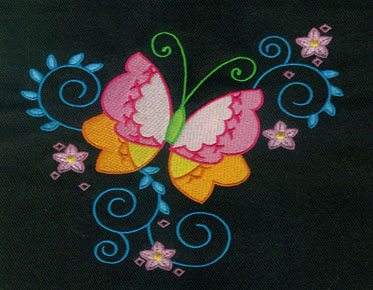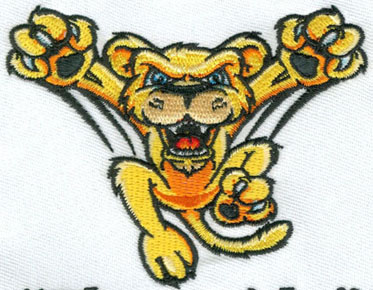A Simple Guide to Digitizing a Logo for Embroidery
You should know that the process of digitizing a logo for embroidery is not as easy as it sounds. Of course, with the right tool and a little practice, you will be able to do it. Here are a few steps that can help you digitize embroidered logos in no time:
What is logo digitization?
Before learning how to digitize a
logo, you must understand what it is. You can't just take a PNG or JPEG file of
your logo and keep using it in your embroidery machine. "How to embroider
a logo?" you ask. It's easy; you just need to learn how to digitize your
logo in a machine-understandable way. You can do this by converting them to
embroidery files. Each file depends on the type of machine you have at hand;
you must use the correct one for your machine to give the best results.
How to digitize embroidery images?
Learn how to digitize your embroidery
designs using these easy steps:
How to Digitize a Logo
1. Digital software
Before you can digitize your images for embroidery, you need to start with your logo. If you don't have one, you should consider making one with our logo maker or logo maker. Whether you are looking for photography logos, real estate logos, construction logos or any other branding, you can find the right design. Then, place the design file into digitizing software to remove any white space around the image for embroidery.
2. Set the appropriate size
Measure the space where you want your logo to appear on the item. Before locking down the image, make sure you have placed the correct and exact dimensions for your logo, as the final product will have the exact design dimensions.
3. Select the stitch type
Manufacturers use different stitch
types to create unique styles, textures, looks, and more. Fabric selection, the
push and pull resistance of the fabric, and maximum stitch length are all
factors that must be considered. Common stitch types for machine-based
embroidery include:
Straight needle
Fill stitch
Satin stitching
4. Splicing direction
Establishing stitching directions allows you to create a blueprint for your machine. This step is essential because the machine needs instructions for each stitch. The pattern of stitches can give different shades and contours to the fabric, replicating the logo design in the best possible way. You can't skip this step as your final product may have to go through multiple jumps of the machine and a very uneven stitch pattern. Proper stitching will also save you thread costs and time.
5. Embroidery thread color
Choosing the right color is just as
important as determining the fabric and stitch type. Color determines how
accurately you can reproduce the digital version of your logo. Make sure to
carefully select the desired color from the color bar. The Pantone color of
your logo must go hand in hand with the color of the thread you choose to use
for your embroidery.
6. Transfer and digitize embroidery
files
After converting normal files like PNG, JPEG, etc. to embroidery files, you now have to transfer the (converted embroidery) files to the machine that will be used for embroidery. The transfer process is easy; you can do it with flashcards, a computer that includes embroidery software, or even a USB cable. This step is crucial for your embroidery machine to recognize the file before it starts working, it does the magic, make sure you choose the proper file that matches your machine type.
7. Prepare the machine
Before your embroidery machine can follow your instructions to stitch a digitized logo onto your branded merchandise, you must go through several steps to prepare your embroidery machine for stitching. You must inform the machine which settings must be used by selecting the thread, stitching sequence, needle, direction, necessary thread color, etc., which may depend on the type of stitching and software you use. The second thing you need to do is place the fabric or product in the embroidery machine frame/loop while carefully sliding them into the machine's arms.
8. Sample test
When working with digital logo design, it is always best to test the performance of your machine. This takes little to no time, but is crucial for doing a final check and seeing if the design needs last-minute changes before you start embroidering the final product.
Now that you know how to digitize a
logo, follow the tests above and continue testing until you are satisfied with
the machine's output.



